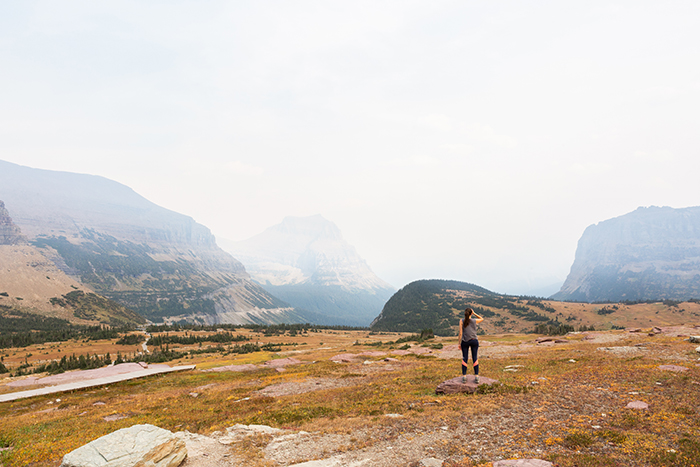In my last post I wrote about our journey from Boise to Glacier National Park, well today I'm going to pick up from there and tell you about Yellowstone and Grand Teton!
After Whitefish/Glacier National Park we headed towards Yellowstone and stopped in Missoula for the night to break up the journey. Missoula was pretty sleepy for a college town we had a delicious dinner at Top Hat and great wine at Plonk.
We spent five nights in the cabin and used is as a base to explore Yellowstone from. Here are my top picks from Yellowstone...
Old Faithful - it erupts every 90ish minutes and if you're lucky/unlucky like us and get there right after it's gone off there's a long trail through hot springs and geysers to while away the time while you wait, just ask a ranger what time to be back by.
 |
 |
Grand Prismatic - we actually could hardly see it because there was a ton of steam coming off it, we read afterwards that if you hike the nearby Fairy Falls you get a much better (and less steamy) view!
Lamar Valley - wide open plains where bison graze (and cross the road from time to time), apparently this is also a great place to fish! If that floats your boat!
Mammoth Hot Spring Terraces - intensely hot water spills out of the ground and erodes the rock creating these stunning, ever-changing formations that look almost other-worldly. Drive to the upper terraces area, park up and get a closer look via the boardwalks.
 |
 |
Grand Canyon of the Yellowstone - definitely my Yellowstone highlight. The day we were there it was snowing heavily in the park and lots of the roads were closed, Old Faithful, Grand Prismatic and Grand Canyon were the only accessible sights. So seeing as we had already visited the former two we opted for the Grand Canyon! We spent the whole day exploring as many of the trails as we could in this area.
 |
 |
Earthquake Lake - this is actually outside of the park but well worth a look. The lake was the location of an earthquake in 1959 which caused an 80 million ton landslide and buried campgrounds in the process. The lake is about 25 miles northwest of West Yellowstone.
For the next part of our trip we had planned to drive to Grand Teton through Yellowstone (and hike Fairy Falls to get that better view of Grand Prismatic) but the snow had continued and roads were closed so we headed down the 20 instead. For a scenic view we decided to take a punt on a back road through Caribou-Targee National Forest and it was fully worth the risk! We only saw a couple of other cars the whole way and the views on this twisty turny road were wonderful. If you do the same, make sure you have a car with 4x4.
We chose the Mountain Modern in Jackson as our base for this leg of the trip. The rooms were very clean and comfortable and the breakfast great! Jackson was a fun spot for the evenings; we had lovely meals at Kitchen and The Blue Lion and drinks at Million Dollar Cowboy Bar and Town Square Tavern.
We saw the Tetons in all their glory as we drove south through the park to Jackson, which was just as well as the following day low lying clouds obstructed the view almost completely! We decided to drive the Hole in One route to take in as much of the sights as we could. We found the route in the Lonely Planet which stated the drive would take 1 hour plus stops - we made it last 6 hours! I highly recommend heading to Mormon Row, we saw lots of pronghorn here, and moose-wilson road is essential - we saw a black bear here! Of course I didn't have time to take a photo but it was top of our list and we were both delighted that we got to see one!
 |
 |
Finally we drove back to Boise from Jackson. The road west out of Jackson (22/33/31) has incredible views and we made a stop at Twin Falls to have a look at Shoshone Falls - which were almost completely dry but still stunning.
I'd say Yellowstone is a must-see for all, and squeeze in Glacier National Park too if you can.








































